Today we are pleased to introduce Jim Willaert as part of the Wisconsin Historical Museum’s History Sandwiched In lecture series. Jim Willaert is the Curator of Interpretation and Collections at Wade House Historic Site in Greenbush, Wisconsin. Wade House is one of the 12 historic sites and museums operated by the Wisconsin Historical Society. Jim has worked in the history field for more than 25 years. Prior to Wade House, he worked at Conner Prairie Interactive History Park in Indiana. He holds a master’s degree in history from Eastern Illinois University. Here today to discuss the Wesley W Jung Carriage Collection, please join me in welcoming Jim Willaert. [applause]
– Good afternoon. Thank you all for coming. For those of you not familiar with us, Wesley W Jung Carriage Museum is part of Wade House Historic Site. We’re located in Greenbush. For those of you not familiar with Greenbush, we are located exactly halfway between Sheboygan and Fond du Lac, which is why Mr. Wade built a hotel there along the stagecoach line in the first place. But today we’re going to focus on the Wesley W Jung Carriage Museum, which is in its new home. It moved in in July of 2013. I’ll start a little bit further back, though, than that. Jacob Jung, the founder of what eventually became the Jung Carriage Company, immigrated to the United States with his sister, Margaretha, and his mother, Magadalena, in 1853. They departed Europe from originally Baden, Germany, but Havre, France, sailing on the ship New York with 172 other people. And I don’t know about you guys, I’m really not a big fan of long distance traveling.
So the idea of a seven-week rough and stormy voyage across the Atlantic that they took really doesn’t appeal to me. But they did indeed arrive safely in New York in September of 1853, stayed around for about a month before moving to Columbus, Ohio. And I don’t know if any of you guys have ever been to Columbus, Ohio. Not a real exciting place at times. And I think Jacob felt the same way because about a year later he moved to Sheboygan. Didn’t waste a lot of time once he got here. Got himself a job working for a carriage company, which we’ll talk about in a few moments, and, of course, found a girlfriend and got married. Although I really shouldn’t say found a girlfriend. See, Jacob had gone to church with a young lady named Eleanora Wilke Nack, and on March 25, 1855, they had their first date.
And about, the first thing Jacob did was propose. And he wanted to get married tomorrow. Well, Eleanora, being a little more sensible than Jacob, said no. I’ll marry you but we have to wait until the day after tomorrow because I’ve got some baking to do. [laughter] But they did marry two days after their first date. Eventually they would have six children. Eleanor, or Clara; Jacob Jr; Wilhelm, Willie; Heinrich, Henry; Otto; and Alfred. Lots of nice good German names. And this is really not surprising because not only did Jung come to us from Germany but he came to Sheboygan for a reason.
And that reason was it was an area that had seen a lot of German immigration and had a lot of skilled woodworkers already there and available to do what he wanted to do, which was build carriages. He came here with an idea, and that idea was to start a carriage company. Originally he worked for an existing company, Brothers and Jones, located at the corner of Pennsylvania Avenue and 9th Street. By the way, this is not Brothers and Jones, but it is located at the corner of Pennsylvania and 9th Street. Brothers and Jones, unfortunately, was not the best company to work for. They couldn’t really pay these guys, and about a year later, after working for them, Jacob and a partner, coworker of his by the name of Lawrence Artmann were able to take over the business. Now, we don’t know what kind of discount they got for money owed, but we do know that they very quickly changed the name to Jacob Jung and worked together for 12 years until Artmann’s death. Neat thing about the company was, well, they kind of had a unique setting. The corner there on 9th and Pennsylvania had a whole bunch of buildings on it and had a courtyard, but only one building was theirs.
So they built the carriages in the building, and they used the courtyard as a showroom and managed to get a good enough reputation that people came to them directly, not only for basic carriages but for very specific, personally-designed carriages. And the business went so well that about 20 years after he got it, Jacob was able to build his own building. We just saw it here. I actually should go back. It’s a Richardsonian Romanesque building. Wood frame, timber frame, brick and stone facade, and it’s just a lovely building. It still stands today, if you want to go to Sheboygan and see it. Although today we don’t make carriages there. We have a beauty salon, a photographer, a lawyer, and a bar.
Inside it was an amazing place. It had a paint shop, a wood shop, and a blacksmith shop. Employed 15 to 20 men, and what I love about this shop is that everybody’s working in kind of tight proximity here. I can’t find my cursor, but we have a fellow right there in the middle. He’s putting mortises in hubs to build wheels. In front of him, you can see bundles of spokes. By this point they were buying spokes pre-made from somebody else. A fellow working on trim on the left, fellow sawing other trim on the right, and the young man standing in the middle, wearing a tie, looking very important, is a very young Wesley. This picture, by the way, this is the 1904.
Look at the factory, this picture was taken about 1912, 1913. As I mentioned earlier, Jung had five sons. Every one of them worked for the carriage company. Everybody in the family knew how to build vehicles, sleighs, wagons, carriages, and built beautiful pieces. But everybody also went their own way. Wilhelm is going to work in the painting and decorating business. You notice in the picture, the building said paint and decorating at one end? He opened his shop in the building with the carriage factory. Jacob Jr, is going to take over the carriage business. And Wilhelm will work with him for a while.
Henry, he’s going to work for a while for dad as a blacksmith, and then he will start a shoe company. By the way, if anybody’s interested, this pair of Jung boots is available for sale somewhere on the Internet. Alfred went into the clothing and dry good business. He even offered 50 cent discounts with a five-dollar purchase if you had the coin. Otto didn’t go into business for himself, but he constantly worked with his brothers in their various businesses. But the entire family did stay in Sheboygan for many, many years. Always tied to the carriage company, no matter what it was called, and the name did change over time. Originally, it was called Jacob Jung. In the late 19th century, it was renamed J&W Jung when Jacob Jr, and Willie took over.
And in 1901 it became what we’ve come to know as the Jung Carriage Company and stayed in business until 1917 when, unfortunately, like many other carriage businesses in the state, those pesky automobiles reduced the demand, and instead of going into the bicycle or automobile business, the brothers merely separated and went into their other businesses. One of the neat things about the Jung factory is everything they did was a custom job. The paint was specific to the buyer. The design of the vehicle was specific to the buyer’s needs, their business, and even their personal height to fit comfortably. And they were not inexpensive. This little carriage you see here– By the way, the $13.85 is just a little repair work. The carriage you see here would have cost about $115 in the early 20th century, at a time when the equivalent vehicle in the catalogs of their competitors in other states cost $28. So this was the Cadillac of its time. However, they sold a lot of vehicles that were instrumental in the building of Sheboygan.
You can see here a column for the bank being moved on a flatbed carriage made by the Jungs. For those of you who might have been to the Carriage Museum in the past, you might recognize those wheels. They’re now under a circus wagon. The building that we looked at, by the way, did stay in the family until 1926 and became a historic landmark in 1974. But the reason we really remember the Jungs was because of Jacob’s grandson, Wesley. Wesley was born in 1899. He grew up with the carriage business around him. He worked in the blacksmith shop, the paint shop, and the wood shop for a while when he was a teenager before going off to join the army in World War I. When he got back, he went to school, spent some time here at the university in Madison, and became an accountant.
But he never lost his love for the family business and for vehicles. And when he got a little bit older and had a little bit extra money, he started collecting these vehicles, restoring things that had been made by his family. He got so interested in it, he became one of the founding members of the Carriage Society of America. He was the treasurer, wrote articles for their journal, participated in carriage-driving competitions, and really surrounded himself with the vehicles his family had built. And, of course, in 1968, he donated the collection to the Historical Society and founded the Wesley Jung Historical Museum. This is a picture, from what I understand, of what Wesley did best, which was paint the striping on vehicles. And you’ll see his work as we go through the rest of our talk here today. So let’s move on to some of the vehicles. Like all of us who have a collection, there’s that one thing you bought that maybe you shouldn’t have.
And the next thing you know, you’ve got a hundred full-size vehicles in the barn out back, you’ve spent hundreds of dollars or thousands of dollars fixing them, and your wife is wanting to know why you have all this stuff. Well, this is the one. It’s a heavy delivery wagon. We just refer to it as the Herzog meat wagon. It was owned by George and made specifically for George Herzog, who was a wholesaler meat dealer a couple miles north of Sheboygan. The Jungs built it for him in 1904, and he used it for a good 10 years hauling whole sides of beef around town to the various markets. So I would imagine that this was pretty funny looking when it was full. The original cost of this guy? A whopping $135. And, of course, being the early 19th century, when we’re done with something we have another use for it.
When Mr. Herzog was done, he sold it to somebody who used it constantly for many years at the State Fair as a wagon his Belgians pulled during the horse competitions. Wesley, of course, being Wesley, got a real deal on it when he bought it. He paid $25. [laughter] I have not included this information in our program today, but I did mention Wesley was an accountant. And one of the really funny things that he liked to do was any time he exhibited his wagons, on the sign he told everybody what he had it insured for. This wagon is very elaborate. It has a fifth wheel allowing the front end to turn. Very smooth action. It also does have a good set of breaks on it because we do have some hills around Sheboygan, and, fully-loaded, this thing is a very heavy piece.
As I said, it’s not only the first piece he bought, it’s the first piece he restored. Imagine this, if you will, close your eyes and see the wagon in green. Wes hated that. So he redid it in the original red, yellow, and black paint scheme, and the one thing that really caught his attention, and he had to get this right, was the steer head. And this is really important to Wesley. Because what happens when you go to the store to buy decals? They’re identical. So when you put one on both sides of the wagon, one steer is facing forward, the other steer is facing back. Wesley was not going to have a backwards-facing steer. He spent three or four years trying to find two decals with the same cow that would face forward.
He wrote letters around the country, he called his daughter in New York and had her go out to all the stores that sold decals, and she finally found these under the counter in a hardware store covered with dust. They’d been made by a company in Bavaria called Pullman Fletcher, shipped to the United States, nobody wanted them apparently, and she got them and shipped them to us here in Wisconsin, where Wesley, so pleased with his decals, put them in a waterproof container and locked them in the safe for seven years to make sure that nothing happened to them until he got around to using them. So you can see by this, he put a lot of time, effort, and money into the restoration work he did. And one of the things that he was proudest of in his collection was a bobsleigh built by his grandfather about 1870. It’s not really that fancy. It’s a, you know, standard wood finish. It’s got some what would today we would call pinstriping on it, but it’s a very lightweight vehicle showing incredible workmanship. That dashboard that’s bent into almost an S is one piece of wood that was steamed and meticulously bent into that shape. I mentioned a moment ago that this is a bobsled, and does anyone know the difference between a sleigh and a bobsled? Two sets of runners.
Bobsleds have two sets of runners, and the front one can be turned. A sleigh has a singe set of runners that are in a fixed position. So this can go really fast and it takes curves much better than a standard sleigh. Some of the vehicles that Wes restored he did on a bit of a whim. And the canopy top surrey is probably his biggest ode to pop culture. This was again made by the family company in about 1890, and when Wes got it, he liked it because it was a very family piece. This is a surrey, and a surrey is a two- to three-seat vehicle with a roof protect you from the sun, and generally they tended to be very reasonably priced so that families could afford them. You could run them with one horse, so you didn’t have to own two but you could use two if you wanted. And when Wesley got this one, he restored it around the 1950s because he was very excited to restore this to this particular color combination.
Notice the fringe on the top. The color scheme matches the lyrics to the song from “Oklahoma.” And I mentioned Wesley, you know, sometimes did some things because he liked to, you know, show people what he’d done and what he could do. He not only would show you this and tell you all about the color scheme, but one of Wes’ favorite things to do was to show people the album cover from the soundtrack to “Oklahoma” and point out the surrey on the cover did not match the paint scheme to the lyrics. So, he also loaned this one to the local community theater for their production of “Oklahoma.” But its true fame comes from a different direction. In 1957, this restored surrey took a trip to Spring Green and was used as the presentation vehicle for the Spring Green centennial parade’s grand marshal. And I don’t know if any of you can recognize the gentleman in the back seat, but that is Mr. Wright. Wright new Wesley Jung. He had eventually sent some pieces to him for restoration work and asked if he could borrow this particular piece. To give you an idea of how much effort we’re talking for the time, to send a driver from Spring Green to Sheboygan, to Spring Green to Sheboygan and back, 660 miles of driving to pick this up and use it for a short parade.
But we all know that Mr. Wright did what Mr. Wright wanted to do, and he wanted this wagon. The piece that we have in our collection today that was actually owned by Mr. Wright was this roof-seat omnibus. I don’t know if you can see it, but there’s a seat up there on the roof. It’s got seating inside, it’s got seating on the front of the cabin, and then, of course, the driver who sits right behind the brake line there. And this is just an amazing piece. Omnibuses were used when you picked up your guests at the train station and drove them to your resort or drove them to your hotel. It really wasn’t something that many people had their own private one of, but Mr. Wright did and he used this particular piece to pick up new apprentices at the train station in Spring Green and take them to Taliesin. You can see the inside very nice upholstered. There are some kind of scary stories of Mr. Wright’s driving that I probably should mention.
I believe the phrase that was used by one of his apprentices was you would see him racing into town toward the train station, standing in the carriage, coattails flying behind him, reins in hand, whip in the other, no ticket in his pocket, but he made it on the train before it left. [laughter] And I would imagine that seeing him standing on top of this would have been really funny. It’s not a short vehicle. That driver seat is a good seven feet off the ground. This is one that was probably very, one of the very first ones ever displayed by Mr. Jung. It went on exhibit in Sheboygan in 1958 under partial restoration, and he didn’t finish it until 1968. But at the same time that he was showing this off, his inventory records showed that he had nine vehicles in his possession that had belonged to Mr. Wright. And what we have since found out is that the Wright estate sent all these vehicles to Wesley for restoration work. And he sent eight of them back, unrestored or partially restored, and he kept this one.
And this may sound like a familiar story to those of you familiar with Mr. Wright. But apparently Mr. Wright was known for not paying his bills. So what we can assume is that Wesley kept this one in payment for the work he had done on it and for the partial work he had done on a governess cart. So today this one is in excellent shape. Three or four of the ones that he did have in his possession at one point have been returned to Taliesin and they are still there today, although not on exhibit. Flipping gears a little bit, let’s go very high tech from the very simple. Wesley also loved fire equipment. And he managed to get this one to restore it. And this was a total mess.
Somebody had pumped the equipment full of mud and let it sit. It took four months of soaking in oil to get all the parts out. But this is a Silsby Pumper. It’s number 863, for those you keeping track of where they all are. It was built in Seneca Falls, New York, in 1886 and served its fire company in Berlin, Wisconsin, very well. They used this device until 1929. And what’s really neat about it is that this guy has a rotary twin steam engine in it. He can get that thing going. By the way, it’s restored to full functionality.
It is so finely machined that you can blow on the blades in the turbine and they will spin. But seeing it go down the road had to be really cool because the guy in the back is there, he’s standing in the coal box, and he’s shoveling coal in this thing as it goes down the road. It takes seven minutes from the time you get the fire going until you can start pumping the water. And this guy with the water source will pump 500 to 600 gallons a minute over 200 feet. Just an amazing piece of equipment. It also was highly decorated. But, unfortunately, for a while firefighters didn’t really like these guys. You know how we all feel when we get new technology, what’s the first thing everybody says? I’m going to lose my job. And it was the same thing here.
But eventually it caught on. Like I said, they used it for over 40 years, so they eventually must have liked it. The other end of the spectrum, though, is the hook and ladder, which was not pulled by horses. This device was designed for fire departments that were too poor to buy a horse. And it was pulled by firemen. Everybody grabbed a hold and took off running. However, when the Jungs built this, they did stop and think and they put brakes on it to make sure that it did not run over the firemen when going downhill. By the way, this one is from the Plymouth Fire Department. Plymouth is a town about 15 miles west of Sheboygan.
One of the really challenges of restoring this, Wesley did all the line work on there that you see. He was able to build new ladders because this thing was a total wreck. There was no parts left. And he bought fire extinguishers, and he went out and bought axes to go in it. You can see where the fire extinguishers. You can see the ax there sitting behind the rail. But nobody made axes the right size anymore. So he took these new axes, went down to the fire department and made a deal with them. If they would give him old axes that would fit his wagon, he would buy them these nice, new ones, which are in so much better shape than anything you guys own.
So the fire department traded him the axes. Everybody got what they needed from the deal, and Wesley was able to continue the restoration of this vehicle. The fellow in the picture here is there for kind of an odd reason. His name is Frederick. He also credited with building this particular hook and ladder. So, some records say it was built by the Jungs, others say it was built by this gentleman. And it is possible that he worked for the Jungs, but this is one of the mysteries we try to solve is where things come from and who actually did the work. He did build the second hook and ladder that the fire department ended up owning. And here’s a picture of the guys who had to pull it.
Our fire department, by the way, ran out all the English-speaking members, took all their notes and held all their meetings in German. Of course, we can’t discuss the 19th and early 20th century without a milk wagon. And Wesley restored this one. It was built in 1905. Unfortunately we don’t know by who. And this is actually framed out just like a building would be, and then the sides are covered. It is a completely enclosed vehicle to help protect the products. Keep the heat off them in the summer, help keep them from freezing in the winter. It’s even got a front window.
The reins actually go through a hole under the window so the driver can see them inside. But one of the really cool things about this wagon and this type of wagon is today we are coming upon what we’re calling the first self-driving vehicles. Well, these were self-driven. The horses new their route so well that when the milkman got out to deliver the products, butter, milk, grade A milk, you know, all those things that came to your home, the horse would keep going to the next stop. And the driver would just walk along behind him, get what he needed, and finally, and the end of the block, he’d get back in and actually drive. But the horse was the brains of the operation. Of course, these were a common sight in most towns in the early 20th century. The Gridley Dairy of Milwaukee eventually became part of Borden. This particular vehicle actually was used to deliver milk in Wauwatosa until 1937.
So it had a long life. Sleighs could also be used for delivery. We know what winters are like around here. Another version of Herzog. This one was built again by the Jungs around 1900. This one delivered whole bodies and whole carcasses, just like the last one, only instead of to the stores this one went from the slaughterhouse to Herzog’s wholesale center. Winter did not stop the business though. We just took off the wheel, put on runners. Here’s a picture of another one of his sleighs in the summer with the wheels on it.
And you can see it’s full of sides of beef. Now, you may notice that this particular vehicle was the same color as the other Herzog one we looked at. That wasn’t a Herzog thing. There were some very popular color combinations of the time period. Yellow with black and red was very common. Green with yellow, red with black, or red with yellow are all represented in most vehicle collections. Of course, you’ll also find wood color, you’ll find black with yellow, but the one thing that I have not run across on a consistent basis at all is a blue vehicle, and my guess is it has to do with the cost of the blue pigment. Keeping with our yellow and black theme, this is my favorite piece in the collection. For those of you who are into old cars: Studebaker.
This one was made in South Bend, Indiana, about 1900. The same people that ended up making the cars. And this was used to keep the oil and the dirt down on roads. Usually it was a community-owned vehicle. This particular one was privately-owned. Look at the spraying gear. This particular one took two operators: a driver and an oiler who sat in the back. He has multiple levelers and dials there to control the flow of his water or his oil. Here’s kind of a good look at one spraying.
What you can’t see on here is the big fancy A on the front. This was owned by Louis Armour. He used– Danforth Lodge was his estate in Oconomowoc. So he used this to treat the roads at his private compound. I have two different stories to tell you about where this came from now. The official statement is it was donated to Mr. Jung by a group of Sheboygan businessmen. The more interesting story came from a visitor who came through my museum about two years ago. He stopped me as I was walking through and said, “You know, “that was in my dad’s garage, and it was covered with oil. “You couldn’t see the color.
“You couldn’t see the logo or anything. “We knew where it came from, “but nobody wanted to think remotely about going through “all the effort of scrubbing oil off something that big “because you know how oil doesn’t come off anything.” So they called Mr. Jung and said if you want it and can get it out of here, it’s yours. He did. Took it home, hit it with a garden hose and everything came right off it. And they found Mr. Armour’s logo, or probably the best word for it, on the front of it, and it turns out that this was used at the Armour-Valentine estate that I mentioned earlier. This is Wisconsin, we have to talk about beer. The Jungs did also make beer wagons, but this one is another Studebaker. It was made originally for the Kurth Brewery back about 1898. And they used it for 50 years until they ran it into the ground. Mr. Jung got his hands on it, restored it for Kingsbury in Sheboygan, who used it through the 1950s and 1960s.
It’s basically a flatbed wagon. It just has some sides on it to keep things from falling off. They were very proud of their beer. It’s fit for a king. But they loaded this thing down so much they had to build it industrial strength. You can see how many layers of leafs there are in those springs. Now, there are three types of beer wagons: those that haul grain, those that haul cases of bottles, and those that haul kegs. This hauled cases of bottles, which, when you fill a wagon this big, you have some significant weight. So they built it to withstand the pressure.
And it’s an amazing piece. It’s still there. It still works. And those springs today are still strong enough that when we had to get up in it with a couple of good sized guys to move some things, springs did not even begin to bend. Since we’re talking about vice, Velvet tobacco was sold in Sheboygan by Herman Schuelke, the mayor. Three-term mayor. And he was very proud of his business. He made home deliveries: cigars, cigarettes, tobacco. You can’t get that today.
And he had the Jungs build this for him, and I love this piece. That is what it looked like the day it rolled off the line. It has never been restored. We are its fourth owner. Mr. Schuelke owned it, he gave it to his son-in-law, who sold it to Mr. Jung, who gave it to us. The trim around the word “Velvet” is gold leaf. You can see the beveled glass. He spent a significant amount of money on this. And, of course, you know, smoking didn’t have the stigma that it did today back then, because, you know, we all smoked with Velvet Joe.
This I think is one of the most amazing vehicles I’ve ever seen. Everything on that is wood. Even the curtains. It was built by James Cunningham & Sons & Company in 1890. It came from Rochester, New York. And this one’s black. We’re used to seeing that. Black’s a mourning color for adults. We also have another one that I’m not going to show you today.
It’s a children’s hearse. It’s white. And children’s hearses were white, representing purity. We don’t generally exhibit that one because it tends to freak people out for some reason. But if you take a close look at the curtains, you can see there’s pilasters on here. I believe they’re Doric columns. Hand-carved curtains. Some of their pieces had carved gargoyles on them. They were just incredibly detailed. And this is what Cunningham was known for.
You can pull this with two horses. Four, of course, is more impressive. And it’s often considered that a hearse like this was the fanciest ride most of its occupants ever took. By the way, these guys are still in business. They still make hearses, but their big thing is custom interiors for your vehicle. So, if you’re on your way home today and you’re thinking the inside of my car needs a redo and you’ve got a minimum of one million dollars, they will talk to you, but apparently they won’t touch anything under a one-million-dollar interior. And that’s James Cunningham up there in the corner, looking every bit the hearse salesman. Children’s wagons weren’t very common, but the Jungs did make some of them. This one was made for a friend of the family about 1903, and it has one sister, or twin, whatever you want to call it.
The other one is blue and it says police on it. That was made for Jacob’s grandkids. And Jacob did personally make this for some friends named Long. The neat thing about these wagons is that not only did they look just like the adult ones which made the kids happy, but they were designed to hook your dog to. [laughter] So you could actually go out and use it. By the way, this is the police one. And that is decorated to look just like the one used by the 1st Ward police in Sheboygan. It’s blue. One of the few ones. Now, I know what you’re thinking. What if you don’t have a dog? Well, you can hook your goat to it, you can hook your sheep to it, or, and this is the best of all worlds, you can hook your turkeys to it. [laughter] And apparently load it with produce. [laughter]
I just hope this little guy isn’t planning on going all the way to the port in Sheboygan with this. I love this piece. I mean, that is just, can you imagine hooking up the turkeys and sending the kids out for a ride. Now, of course, if we’re going to go to the very small, we should also look at the incredibly elegant. Road coaches, also called park drags, were for the elite. This particular vehicle was made by the CP Kimball Company in Chicago. It comes from about 1880. And one of the great things about these is you could put everybody you know on it, go to a sporting event, and use it as a mobile grandstand. And, of course, there are records of people complaining about these things parking in front of them and then they couldn’t see. It carried 16 passengers inside and on top. You can see the fellow at the back. There’s a ladder there that helps you get up. And on top of that, it has a pantry in the back. This particular one came with two zinc-lined mahogany coolers. And a drawer or tray to put your china, silverware, and even wooden secured cones for your wine glasses. A little demonstration of how to pack on up there at the top.
We didn’t know this was there. We were moving the vehicle one day, doing some cleaning on it, and decided to open the door in the back and all this really cool stuff was there. Also, I should mention that we don’t want to leave the horses out. There’s another compartment at the front under the driver seat to put hay and oats for the horses. This is a monstrous vehicle. It’s a good eight or nine feet to the top of it. And you have to have four horses to pull it. It’s what’s called a four-in-hand. This particular one has a little bit of a history to it.
I would assume that those coolers saw a lot of beer in their day because this was owned by Captain Pabst and his family. Well, the age of wagons came to a close. Horse-drawn vehicles lost their appeal when the automobile came, and it didn’t take long. Here in 1911, Sheboygan– By the way, 8th Street is kind of our main business district. You can see one car in the middle amid all the horse-drawn vehicles. It was only seven years later that there’s not a horse in sight. So, today, we can remember the vehicles, we can remember the work of factories such as the Jungs, and, you know, the great work of preservation and restoration done by Wesley W Jung, exhibited in the museum of Wade House. Thank you. [applause]
Search University Place Episodes
Related Stories from PBS Wisconsin's Blog

Donate to sign up. Activate and sign in to Passport. It's that easy to help PBS Wisconsin serve your community through media that educates, inspires, and entertains.
Make your membership gift today
Only for new users: Activate Passport using your code or email address
Already a member?
Look up my account
Need some help? Go to FAQ or visit PBS Passport Help
Need help accessing PBS Wisconsin anywhere?

Online Access | Platform & Device Access | Cable or Satellite Access | Over-The-Air Access
Visit Access Guide
Need help accessing PBS Wisconsin anywhere?

Visit Our
Live TV Access Guide
Online AccessPlatform & Device Access
Cable or Satellite Access
Over-The-Air Access
Visit Access Guide
 Passport
Passport

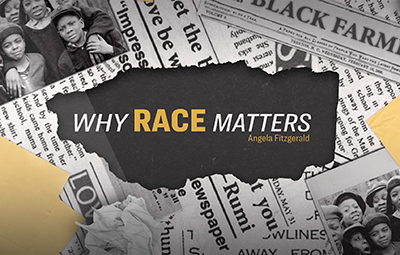
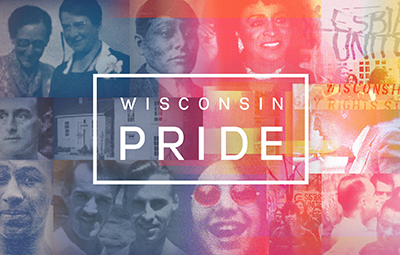




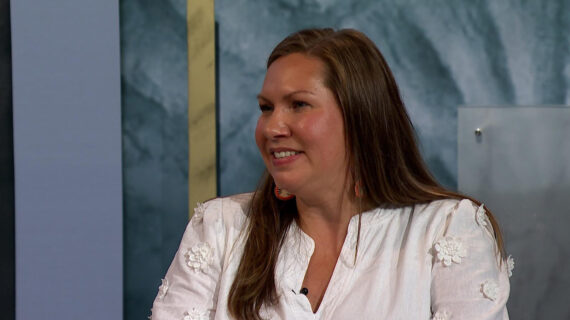
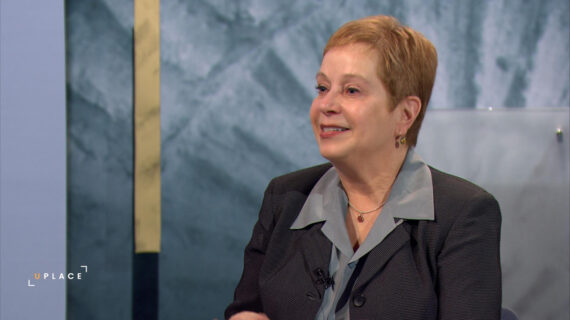

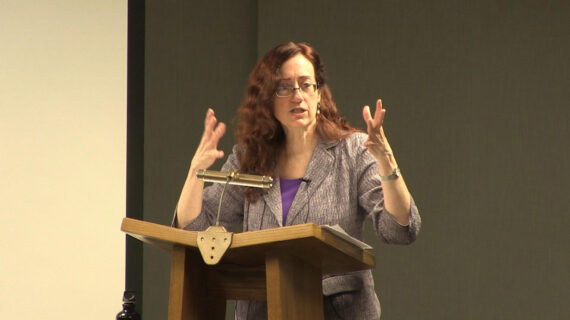

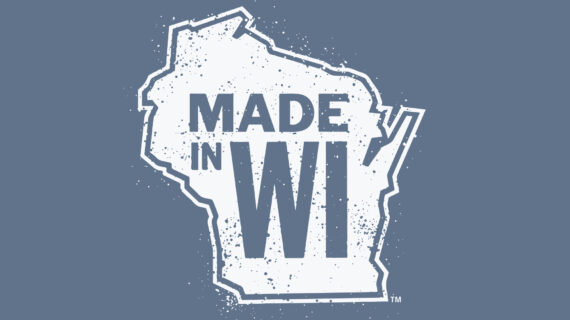

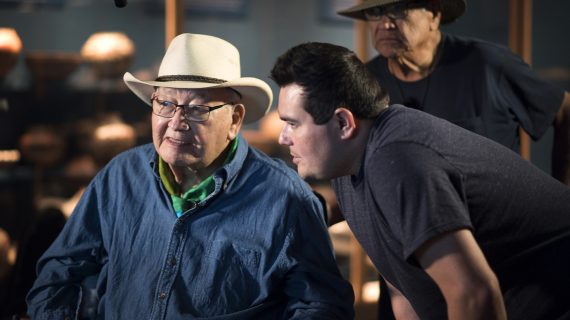

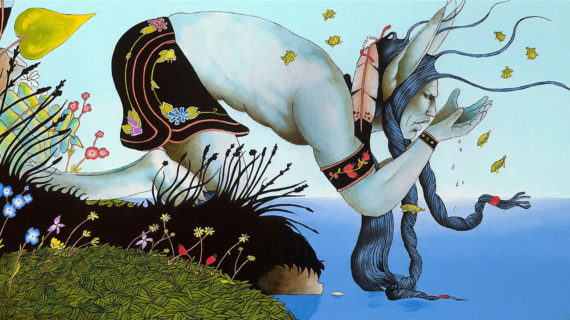

Follow Us